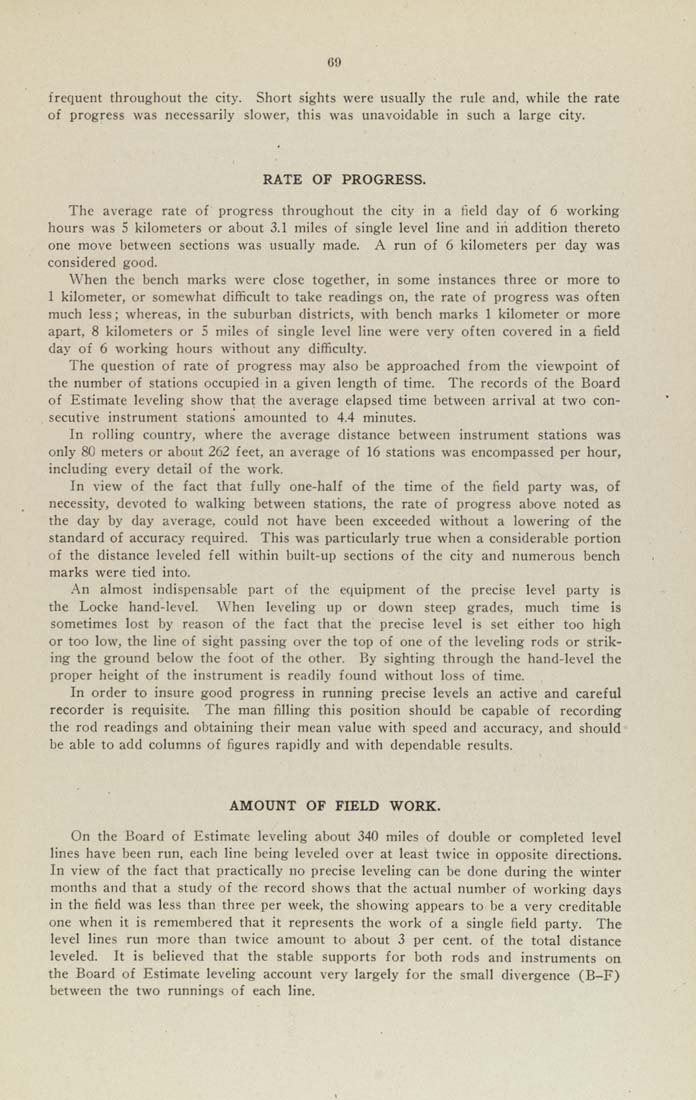frequent throughout the city. Short sights were usually the rule and, while the rate
of progress was necessarily slower, this was unavoidable in such a large city.
RATE OF PROGRESS.
The average rate of progress throughout the city in a field day of 6 working
hours was 5 kilometers or about 3.1 miles of single level line and in addition thereto
one move between sections was usually made. A run of 6 kilometers per day was
considered good.
When the bench marks were close together, in some instances three or more to
1 kilometer, or somewhat difficult to take readings on, the rate of progress was often
much less; whereas, in the suburban districts, with bench marks 1 kilometer or more
apart, 8 kilometers or 5 miles of single level line were very often covered in a field
day of 6 working hours without any difficulty.
The question of rate of progress may also be approached from the viewpoint of
the number of stations occupied in a given length of time. The records of the Board
of Estimate leveling show that the average elapsed time between arrival at two con-
. secutive instrument stations amounted to 4.4 minutes.
In rolling country, where the average distance between instrument stations was
only 80 meters or about 262 feet, an average of 16 stations was encompassed per hour,
including every detail of the work.
In view of the fact that fully one-half of the time of the field party was, of
necessity, devoted fo walking between stations, the rate of progress above noted as
the day by day average, could not have been exceeded without a lowering of the
standard of accuracy required. This was particularly true when a considerable portion
of the distance leveled fell within built-up sections of the city and numerous bench
marks were tied into.
.An almost indispensable part of the equipment of the precise level party is
the Locke hand-level. When leveling up or down steep grades, much time is
sometimes lost by reason of the fact that the precise level is set either too high
or too low, the line of sight passing over the top of one of the leveling rods or strik¬
ing the ground below the foot of the other. By sighting through the hand-level the
proper height of the instrument is readily found without loss of time.
In order to insure good progress in running precise levels an active and careful
recorder is requisite. The man filling this position should be capable of recording
the rod readings and obtaining their mean value with speed and accuracy, and should
be able to add columns of figures rapidly and with dependable results.
AMOUNT OF FIELD WORK.
On the Board of Estimate leveling about 340 miles of double or completed level
lines have been run, each line being leveled over at least twice in opposite directions.
In view of the fact that practically no precise leveling can be done during the winter
months and that a study of the record shows that the actual number of working days
in the field was less than three per week, the showing appears to be a very creditable
one when it is remembered that it represents the work of a single field party. The
level lines run more than twice amount to about 3 per cent, of the total distance
leveled. It is believed that the stable supports for both rods and instruments on
the Board of Estimate leveling account very largely for the small divergence (B-F)
between the two runnings of each line.
|








